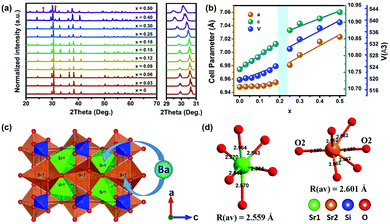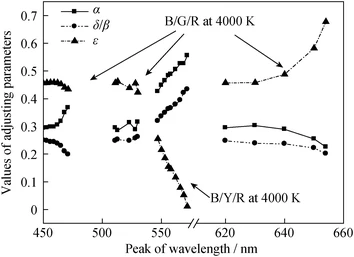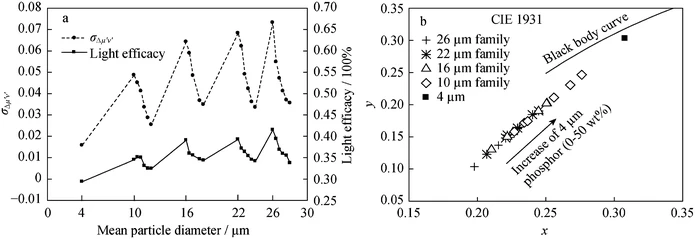Journal of Materials Chemistry C .Issue 16, 2021
The practical application of near-infrared (NIR) phosphors is hindered due to their limited light emitting region and narrow bandwidth. Here, we report a series of Cr3+-doped olivine phosphors, (Mg1−xLix)(Mg1−xScx)GeO4:Cr3+, with tunable luminescence from NIR-I to NIR II based on crystallographic site engineering. By using a [Li+–Sc3+] unit substituting for a [Mg2+–Mg2+] unit, the NIR luminescence can be largely tuned from 940 nm to 1110 nm, and the corresponding FWHM can be modified from 236 to ∼300 nm. The internal quantum efficiency (IQE) and external quantum efficiency (EQE) of Mg2GeO4:1% Cr3+ were measured to be 48.19% and 16.38%, respectively. The photoluminescence of the phosphors matches well with the absorption of several functional groups. By measuring the NIR absorption of different liquids illuminated by NIR light from our phosphors, qualitative and quantitative analysis can be realized. These results suggest that the super-broad NIR luminescence of (Mg1−xLix)(Mg1−xScx)GeO4:Cr3+ has potential applications as light sources for nondestructive food analysis.











